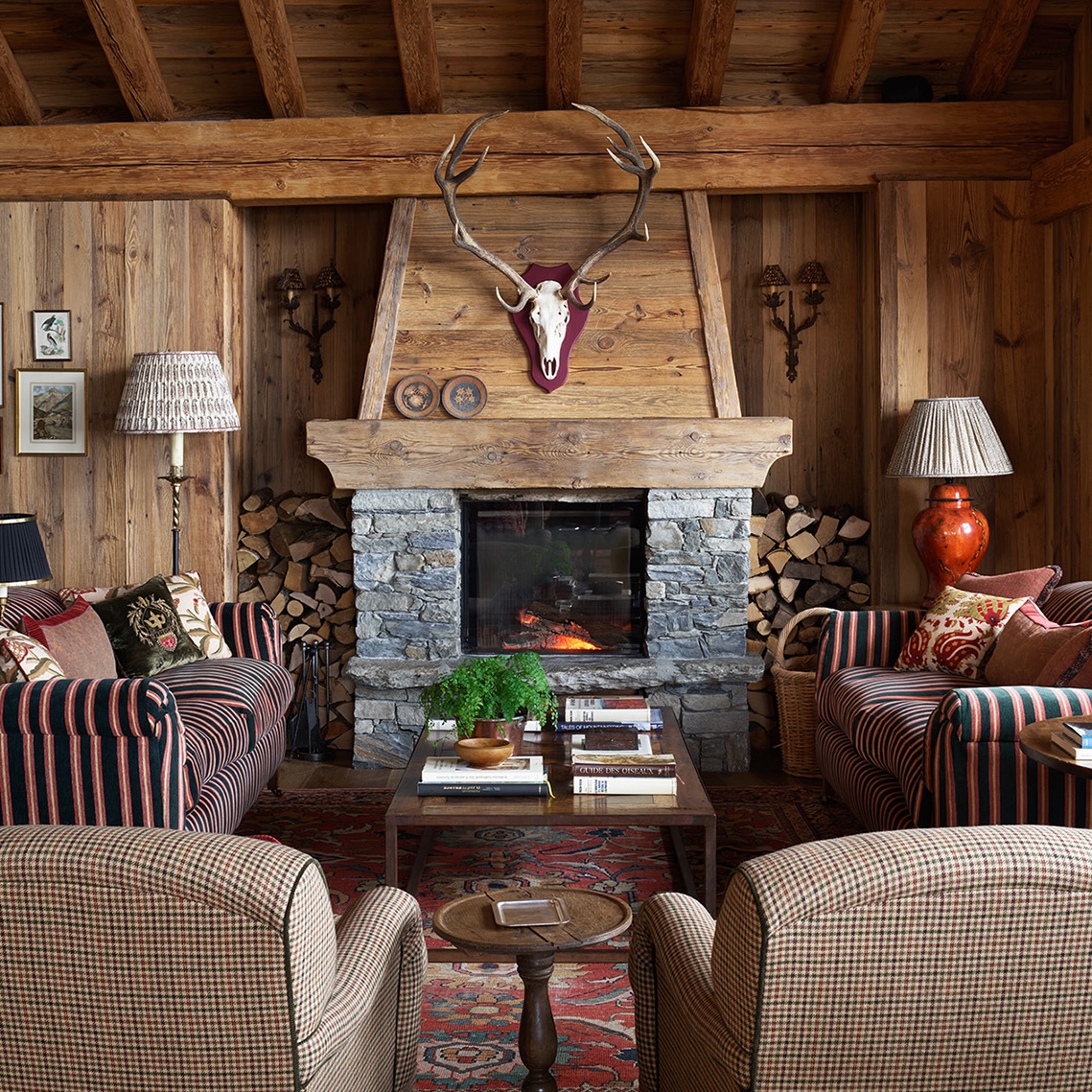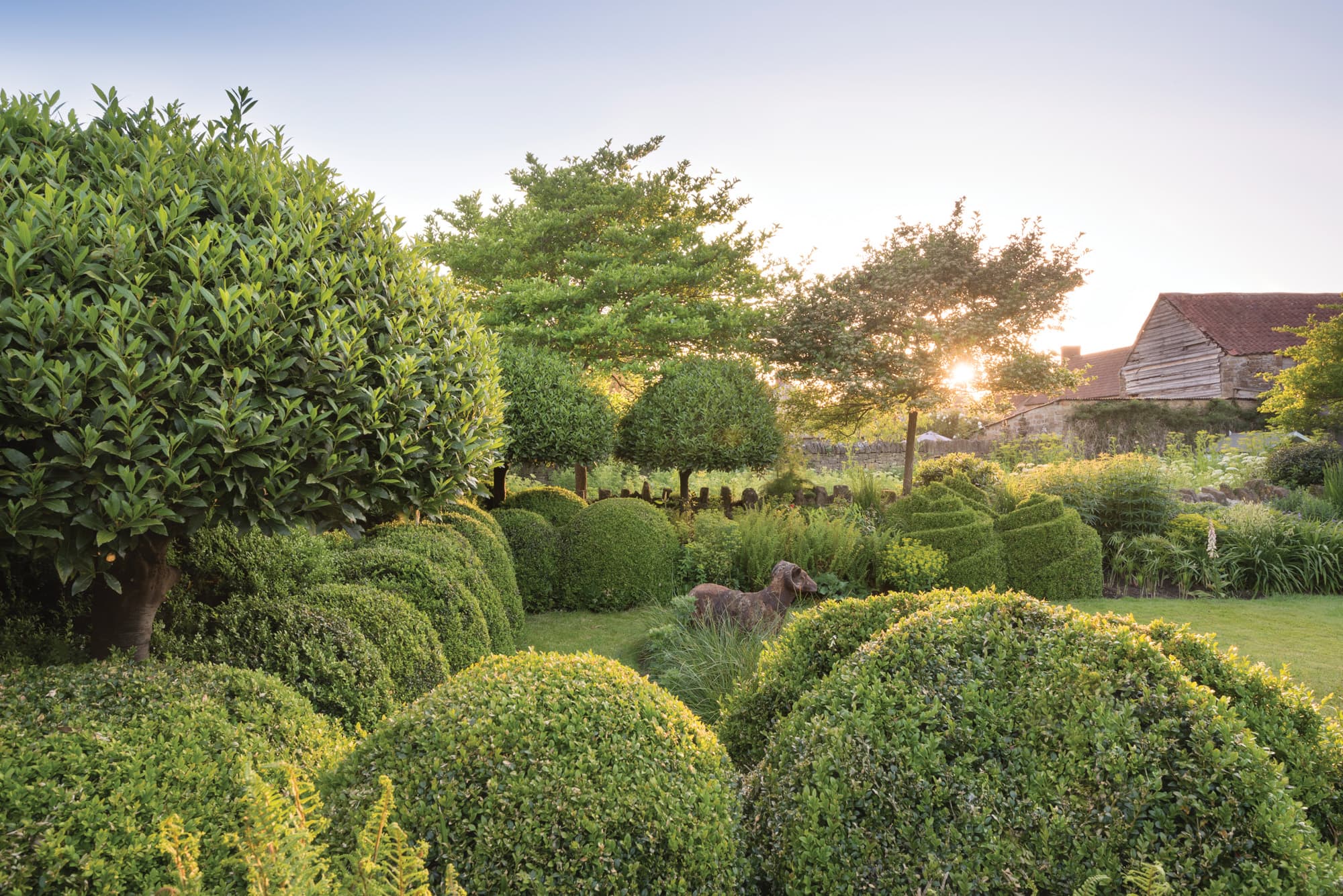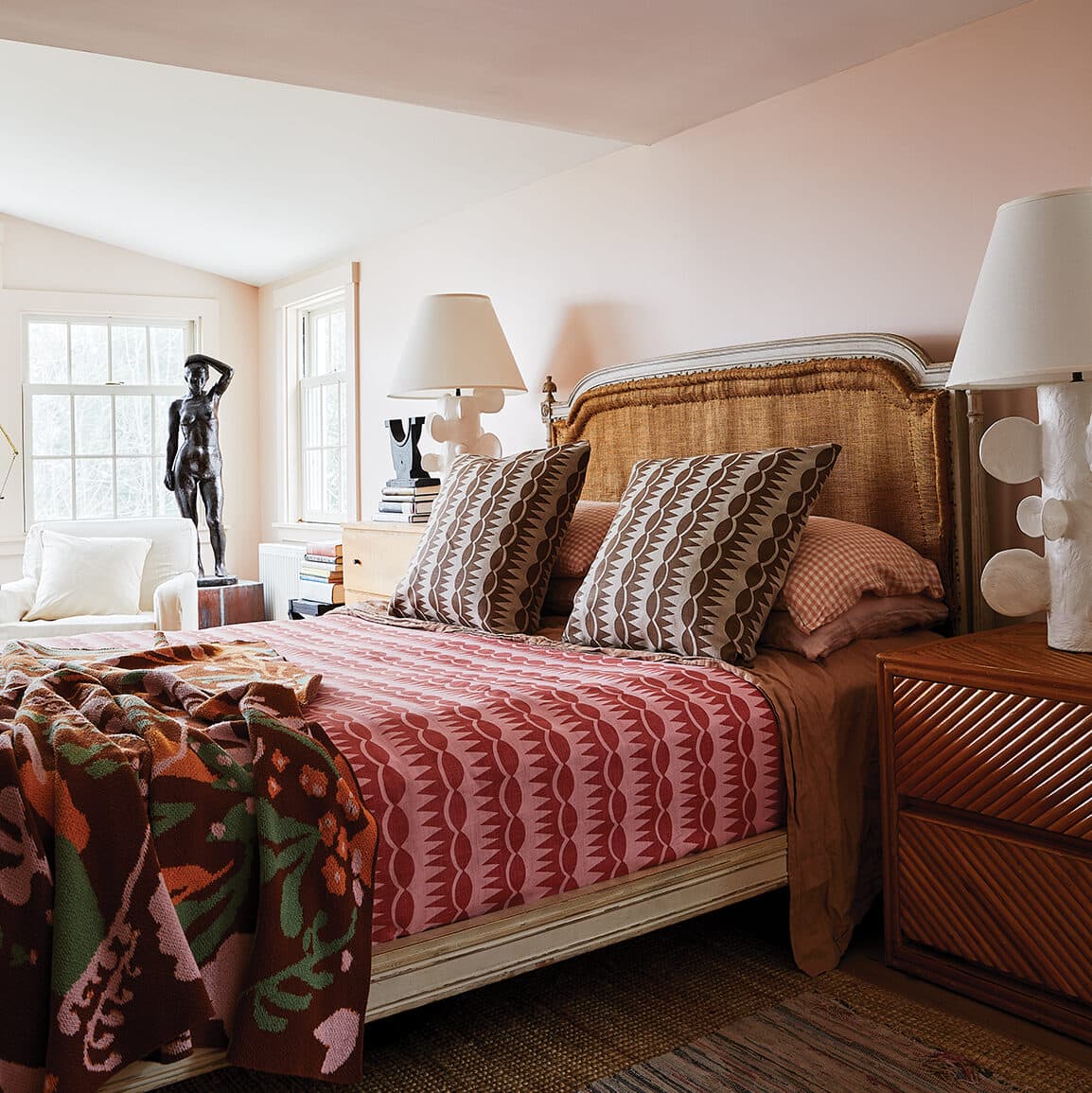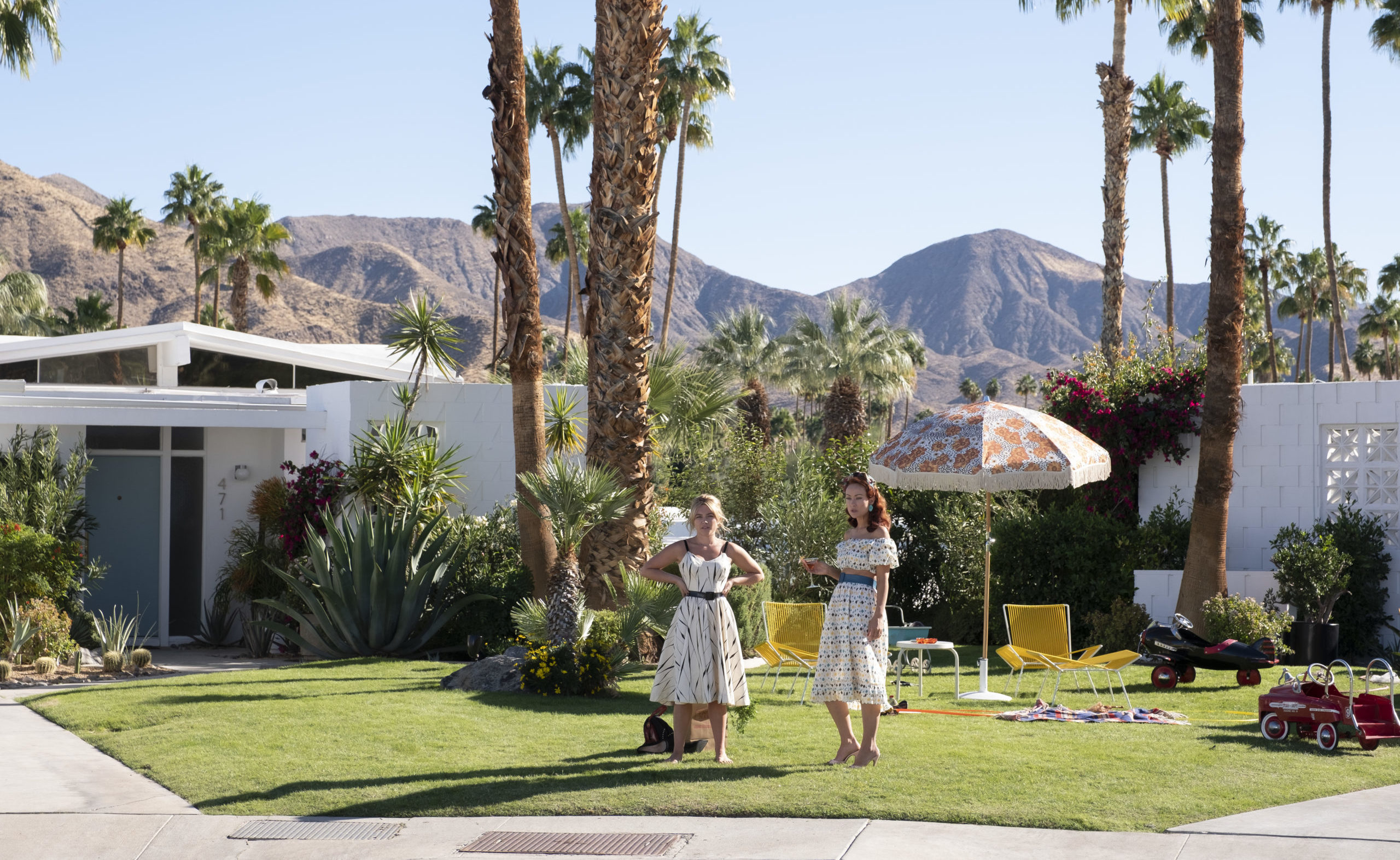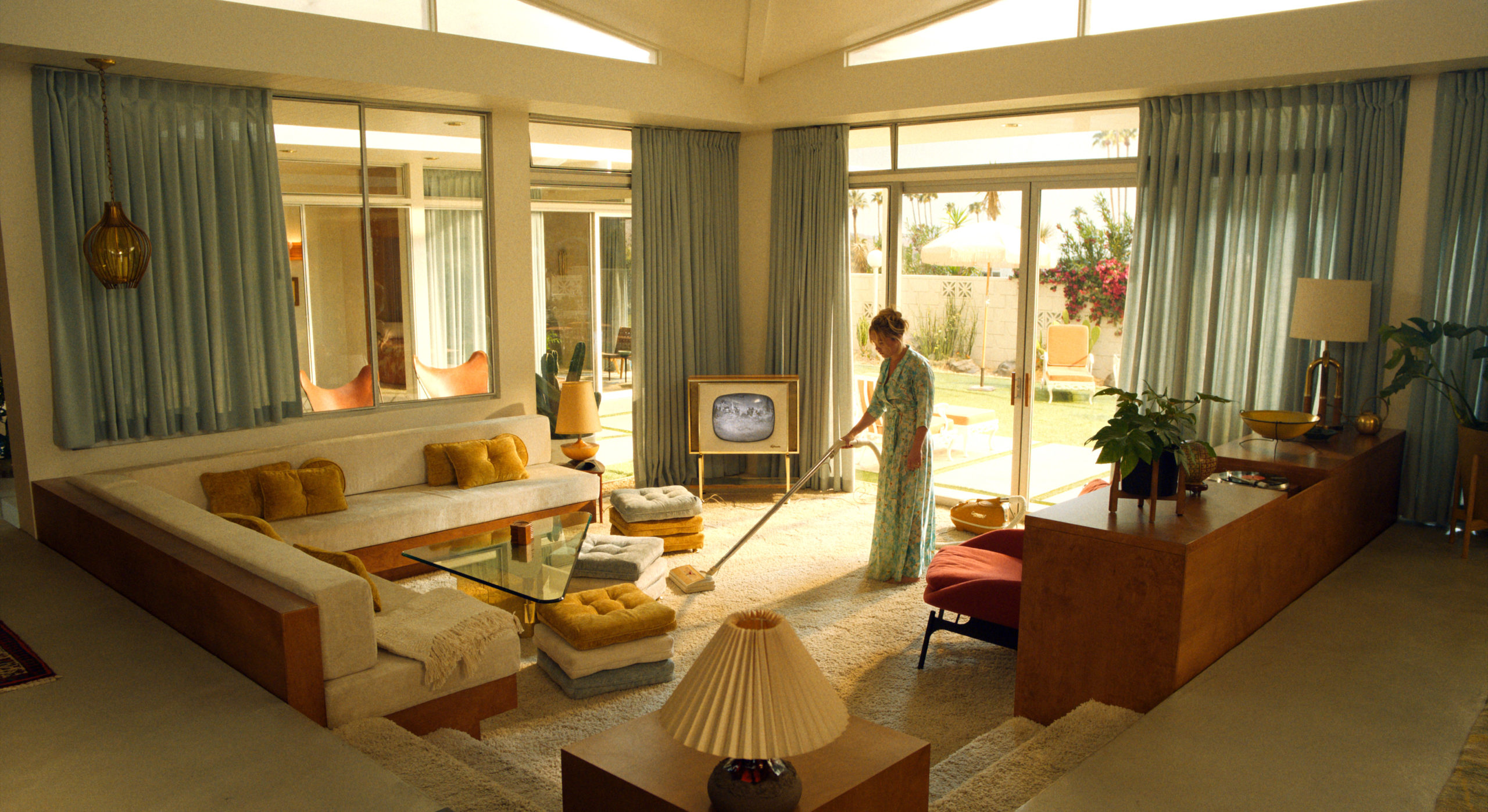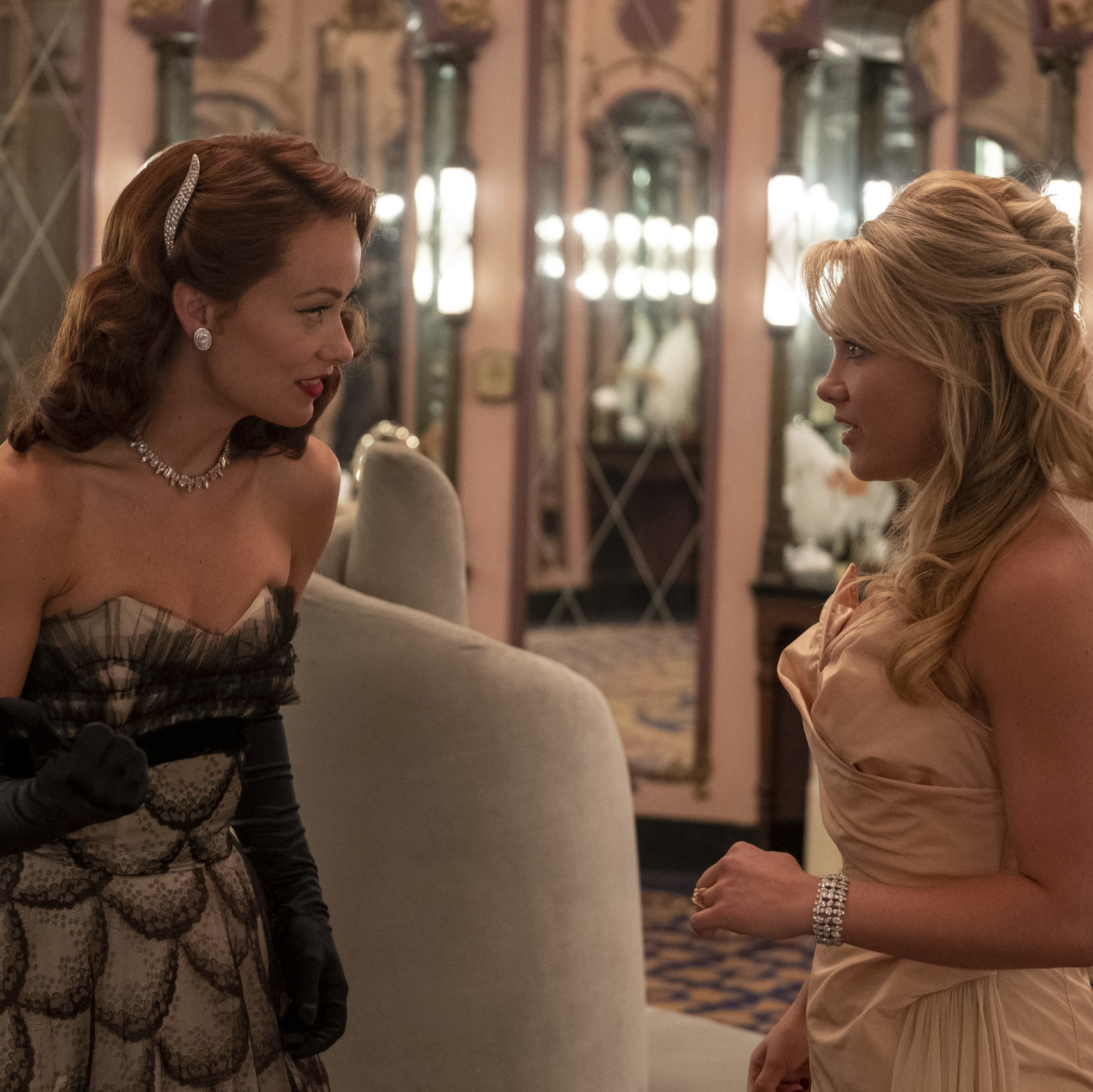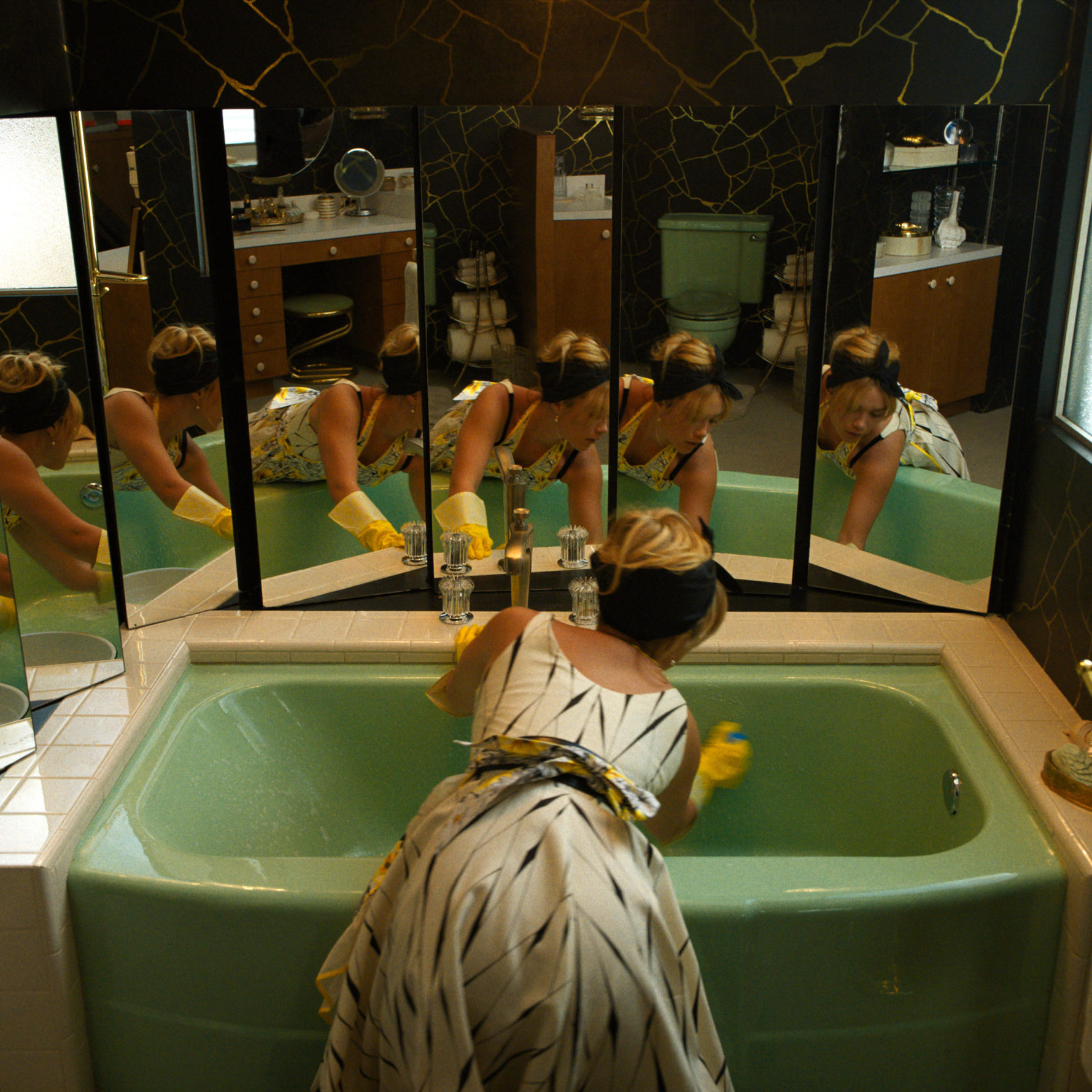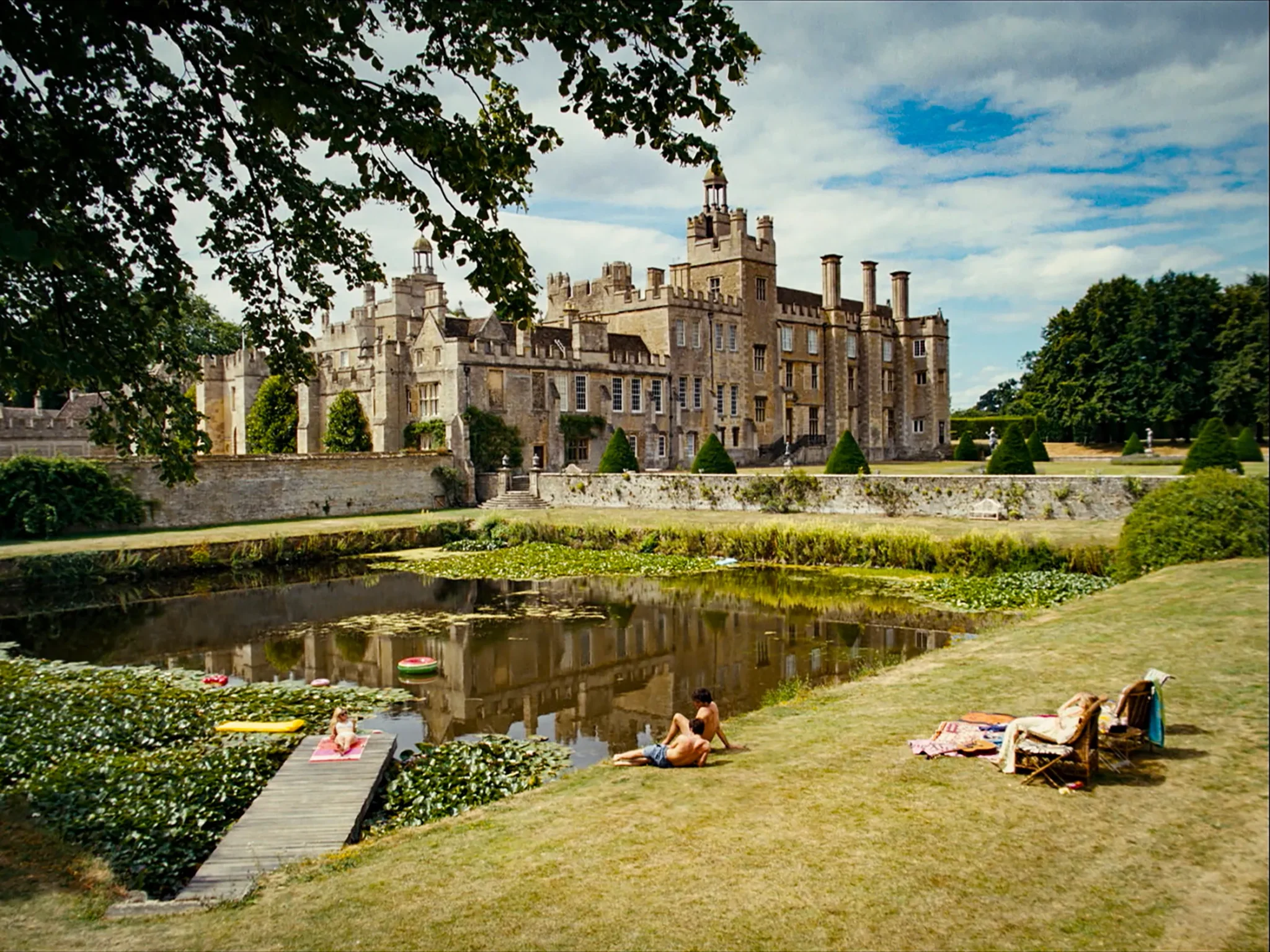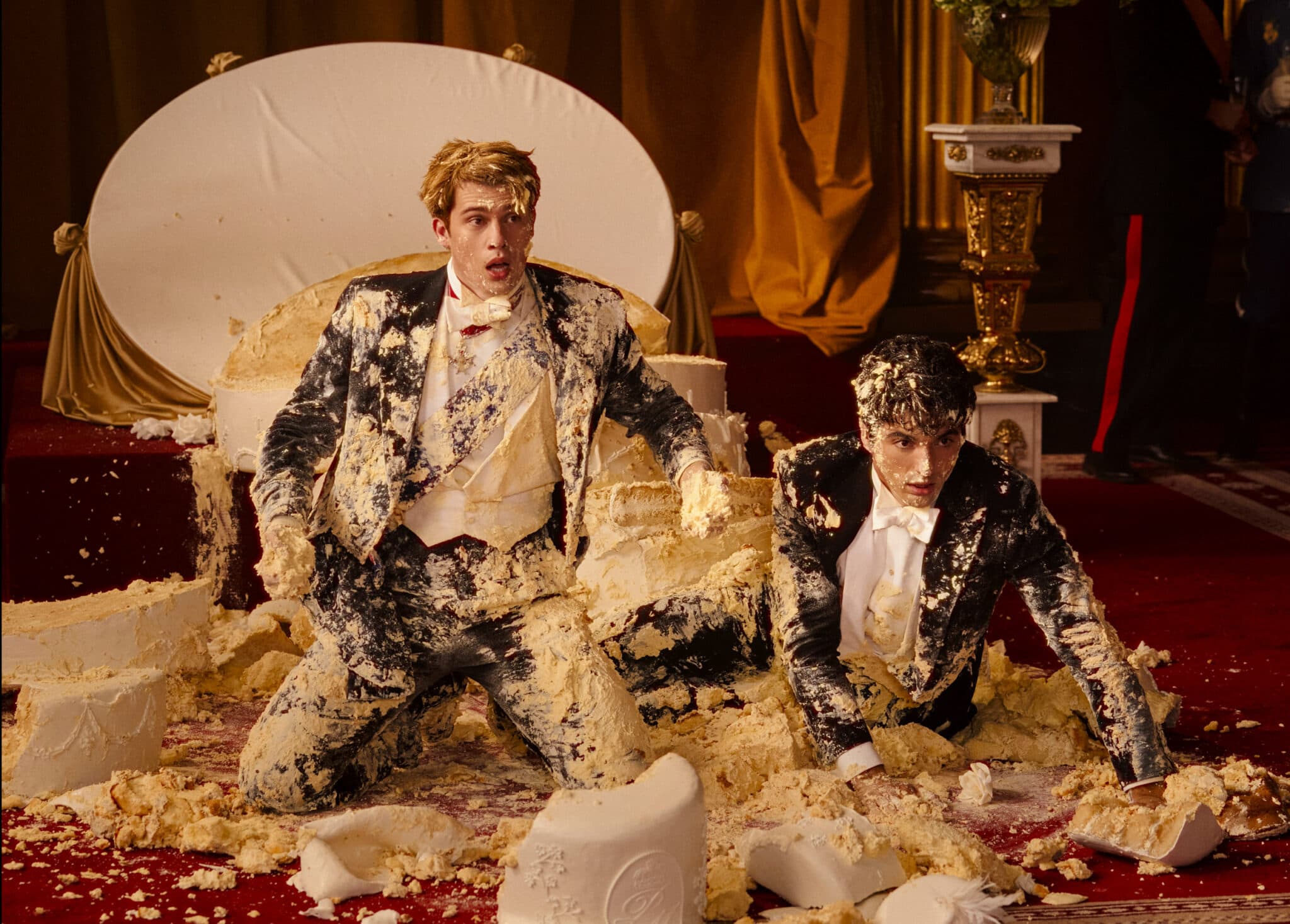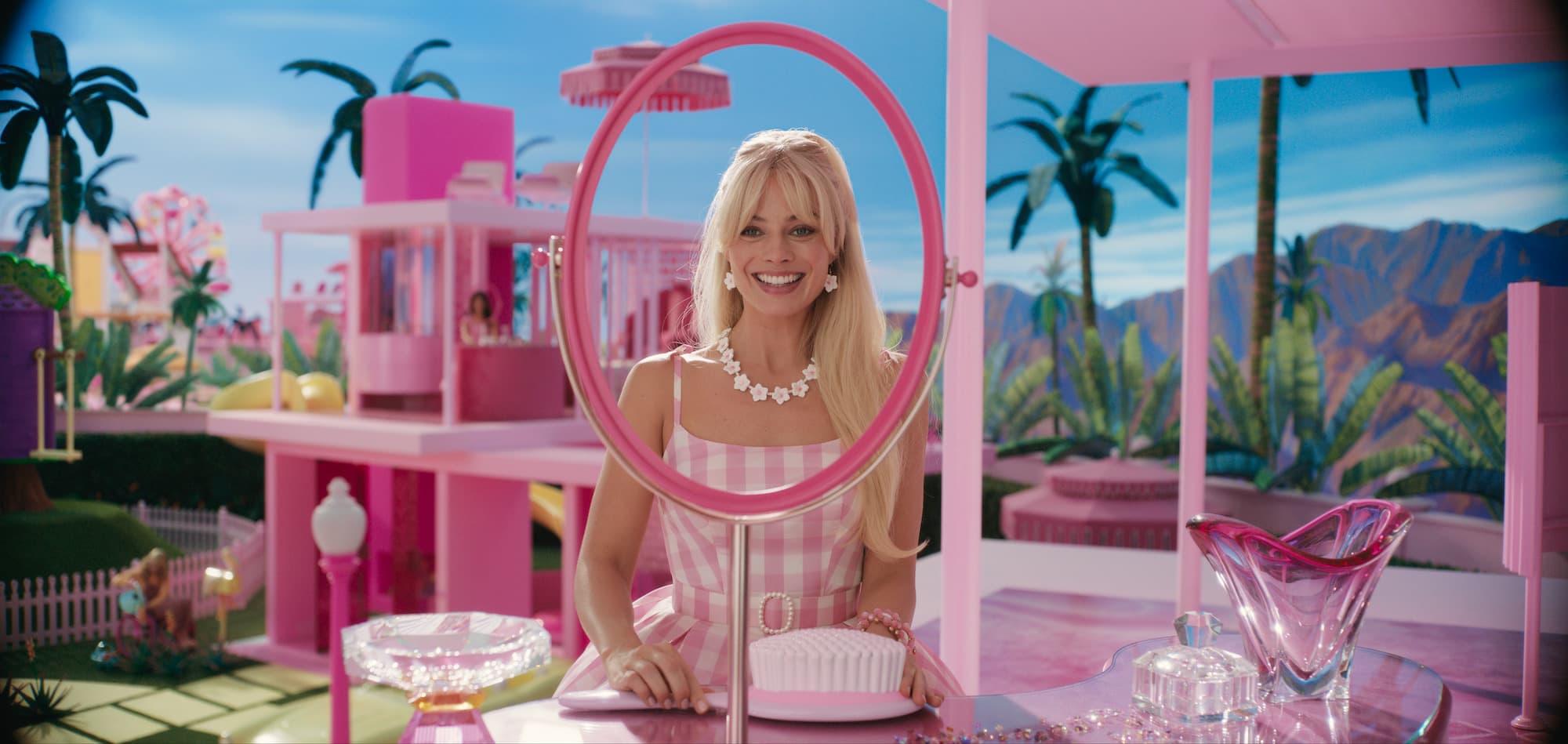From the endless blue skies and swaying palm trees to manicured lawns and retro-styled cul-de-sacs, the resort town of Palm Springs, California, has always been a made-for-the-screen locale. (See: 1963’s Palm Springs Weekend and 1971’s Diamonds Are Forever.) But it is perhaps director Olivia Wilde’s sophomore film, Don’t Worry Darling, that captures the town at its best.
The psychological thriller tells the tale Alice (Florence Pugh) and Jack (Harry Styles), a married couple living in the planned desert community of Victory, California—for which the real-life Palm Springs stands in. The men work for the top-secret Victory Project headed by charismatic leader Frank (Chris Pine), while the stylish women in spend their mornings cleaning and cooking and their afternoons gossiping and sipping martinis under the shade of colorful umbrellas, basking in the indulgences of mid-century upscale suburbia. The result is Stepford Wives and Mad Men meets The Twilight Zone and Get Out.
Tasked with creating the candy-colored world was production designer Katie Byron (who previously worked with Wilde on the film Booksmart). After doing a deep dive into all things Palm Springs, she details, “We all agreed this utopic society doesn’t need to be flat and pristine. There are a lot of dynamic qualities in the 1950s, and we could embrace the sensuality of the time while we show the period and reference all the rule breakers of design. We wanted to build the most sumptuous world.”
Byron looked to the works of modernist luminaries like Richard Neutra, Rudolph Schindler, and Albert Frey, along with James Schnepf’s bible Palm Springs Modern Living as a guideline. “I am really into modernism at its most playful,” says Byron. “Albert Frey is a design hero and I love the optimism in his architecture and how he used modern materials mixed with organic.” Her love for Frey’s work even extended to the color scheme for Alice and Jack’s house, aptly known as Albert Frey Blue.
Located in Indian Canyon in south Palm Springs, Canyon View Estates doubles as the mysterious Victory. Designed by architects Dan Palmer and William Krisel in 1962, Canyon View Estates was the first condominium development of its kind. Both experimental and innovative in its day, its cul-de-sacs showcase the various houses clad in both native stone and concrete blocks with vaulted ceilings, butterfly rooflines, and triangular clerestory windows.
One of the most historical settings featured in Don’t Worry Darling is the famed Kaufmann Desert House, made popular by the iconic 1970 Slim Aarons photograph “Poolside Gossip,” in which a group of fashionable women recline on chaise lounges with a cocktail. Built by Neutra in 1946, the house stands in as the residence of Frank and his perfectly coiffed wife Shelley (Gemma Chan). “Poolside Gossip” became a design reference for Wilde, who hung the print on her wall for inspiration.
“The hills behind the house and the landscape make it quite magical,” Byron says of the Kaufmann House, which recently sold for a cool $13.06 million. “It feels new and more modern than any place you will ever be. There is something about that space that is a total masterpiece.”
Also noteworthy is the eye-catching late 1960s-style Volcano House designed by Harold James Bissner, Jr. Resembling a spaceship on a hill, the white-domed architectural icon rests upon a 150-foot cinder cone with a view of the Mojave Desert. Cast in the film as the Victory Project headquarters, the retro-futuristic residence plays a pivotal backdrop for the story’s finale.
While designing Alice and Jack’s home, Byron referenced the work of architect and designer Alexander Girard for the interiors. “Girard and his playfulness are so specific in his spaces. Even the cutlery is considered part of the design,” she says. Set decorator Rachael Ferrera sourced the period-perfect furnishings, incluing a custom sofa, animal statues, stacked-pillow ottomans, and a record cabinet with storage for albums (known at the time as LP’s). And no self-respecting mid-century home would have been complete without a built-in bar—fully stocked, of course.
One of the stand-out vintage pieces is Alice and Jack’s television set, which features a light frame around the screen. “I found it at RC Vintage and actually didn’t know what a star that TV would be,” Ferrera says, who also credits Modernica in Los Angeles with many of her finds.
The couple’s house, built on a soundstage, was a U-space design that maximized the canyon views. “We built it to feel like a glass house,” details Byron. “It creates this sense of decadence and voyeurism where you can shoot in one room and see the others.” The comparisons to Alice Through the Looking Glass certainly wasn’t lost on the film’s production team, either. Adds Byron, “It’s like this never-ending jewel box.”
Go behind the scenes with FREDERIC’s Screening Room series.


